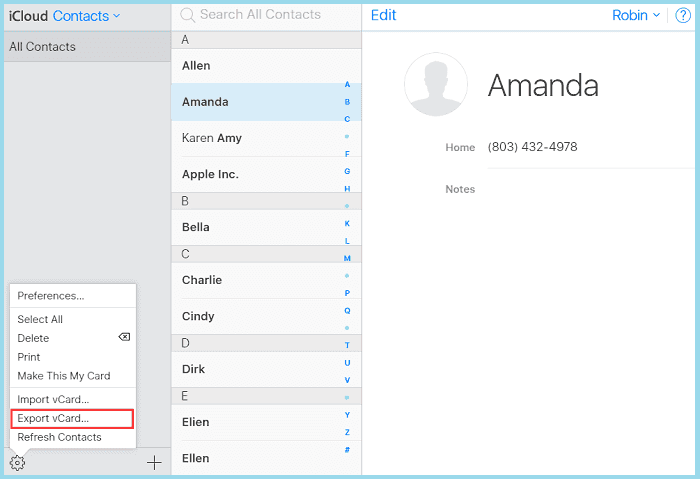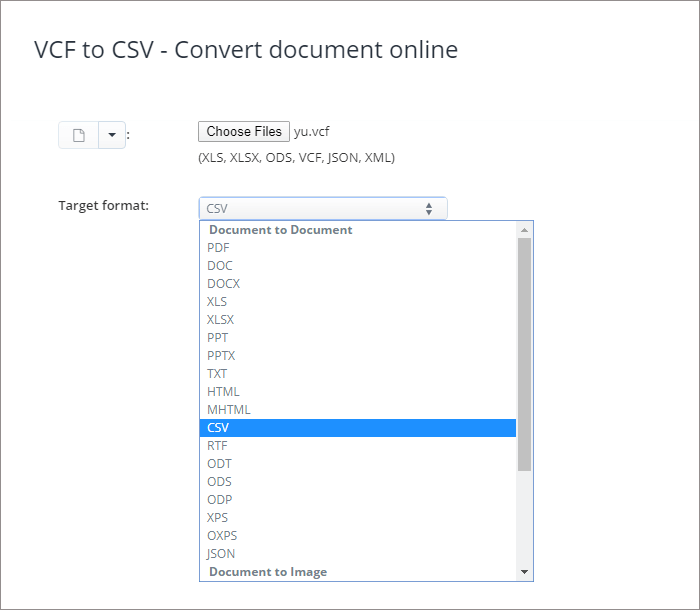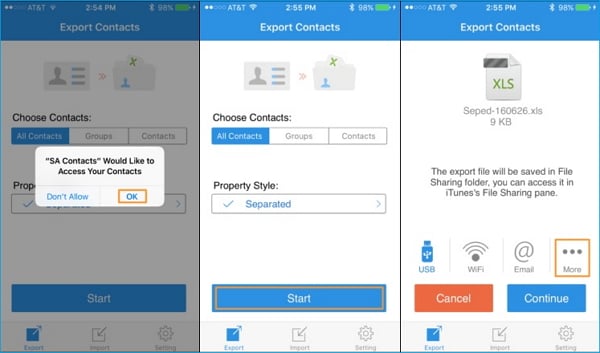How to Export Contacts from iPhone to Excel or CSV
Quick Navigation:
- How to Export iPhone Contacts to CSV Directly
- How to Export Contacts from iPhone to Excel/CSV Using iCloud
- How to Export iPhone Contacts to Excel Using a Mobile App
- The Bottom Line
Three easy methods for you to export iPhone contacts to Excel or CSV.
A CSV (Comma-Separated Values) file is a plain text file that has excellent compatibility with spreadsheet programs, like Microsoft Excel, Google Sheets, Apple Numbers, etc. Thus, when you want to export iPhone contacts to Excel, many of you choose to export iPhone contacts to CSV since CSV is an Excel-friendly format. While for others, they may want to export contacts from iPhone to Excel by saving the contacts as a .xls file.
Apple makes it easy to export iPhone contacts to VCF, which can be done with the help of iCloud. However, when you are looking to export contacts from iPhone to Excel or CSV, there isn't any official way that helps you to do it directly. Thus, you will need third-party tools or services to export iPhone contacts to Excel or CSV as you expect to.
How to Export iPhone Contacts to CSV Directly
Notes: If you want to export your iPhone contacts as an Excel file, you just need to take one more step, which is to save the CSV file as an XLS or XLSX file via MicroSoft Windows or other similar apps.
"How do I export my iPhone contacts to a CSV file?"
To export iPhone contacts to CSV, you will need an iPhone transfer software tool like Qiling MobiMover. It not only supports contact transfer but also allows you to set the target format, including CSV, HTML, and VCF. Once you save your iPhone contacts as a CSV file on your computer, you can also easily save it as an Excel file since these two file types are highly compatible.
Other than contacts, it also works to transfer photos, videos, music, ringtones, books, and many other types of content. More specifically, here are the things you can do:
- Download text messages from an iPhone to a computer
- Transfer photos from one iPhone to another
- Put music on an iPhone without iTunes
- Transfer WhatsApp chats to PC
To export iPhone contacts to CSV:
Step 1. Connect your iPhone to the computer. To export your contacts from iPhone to CSV, you need to change the export settings first: Click "More" > "Settings", choose "CSV" as the export format, and click "Save". Afterward, click "Phone to PC".
Step 2. Select "Contacts" among the types of content and click "Transfer". If necessary, click the storage path to change it according to your needs. (If you want to transfer contacts selectively, go to "Content Management" instead.)
Step 3. After exporting contacts from iPhone, you can now access the CSV file in the selected folder and open it using Microsoft Excel or any other compatible program.
How to Export Contacts from iPhone to Excel/CSV Using iCloud
Using Qiling MobiMover is a direct way to export contacts on iPhone directly as a CSV file. There are also indirect ways to get things done, one of which is to use iCloud. By syncing your iPhone contacts to iCloud, you are able to export the items to the vCard format. Then you can convert the VCF file to CSV or Excel using an online converter. Make sure you have enough iCloud storage available and follow the steps below to export your contacts from your iPhone to a CSV file or Excel file.
To export contacts from iPhone to CSV/Excel:
First, you should export iPhone contacts to vCard (.vcf).
Step 1. On your iPhone, go to "Settings" > [your name] > "iCloud" and toggle on the "Contacts" option.
Step 2. On your computer, go to visit iCloud.com and sign in with your iCloud account, which should be the same as the one you use on your mobile device. (iCloud contacts not syncing? Fix it right now.)
Step 3. To export iCloud contacts to Excel or CSV, you first need to save them as a VCF file:
- After you sign in, choose "Contacts" among the iCloud options. Now you could see all the items from your iPhone Contacts app.
- Select the contacts you want to export and click "Settings (the gear icon)" > "Export vCard".
Step 5. Go to the selected folder to check the contacts in VCF format.

Next, you can convert the VCF file to CSV or Excel using an online tool. (I will take aconvert.com as an example. You can search for other online converters from the Internet to apply.)
Step 1. Visit aconvert.com on your computer.
Step 2. Choose "Document" in the list and click the "Choose Files" button.
Step 3. Select the vCard file you just exported and click "Open".
Step 4. Select the "CSV" format or "XLS/XLSX" as the target format and click "Convert Now" to start exporting your iPhone contacts to a CSV or Excel file.
Step 5. After the conversion, click the download icon in the "Conversion Results" section, open the file URL and then save the file to your computer.

If you prefer to export iPhone contacts to Excel for free, you can apply this method to do it without any cost.
How to Export iPhone Contacts to Excel Using a Mobile App
The first two methods export your iPhone contacts with the help of a computer. If you don't have a computer currently, how can you export iPhone contacts to Excel? The answer is to use a mobile app. There are a couple of different apps that allow you to export iPhone contacts to CSV or Excel without iTunes or even a computer. Here I will take an app called SA Contacts Lite as an example.
To download iPhone contacts to Excel:
Step 1. Download and install SA Contacts Lite from the App Store. (If you can't download apps from the App Store, read the related guide to learn how to fix it.)
Step 2. Open the app and tap "OK" to give the app permission.
Step 3. Choose to export all contacts, groups, or selected items and click "Start".
Step 4. When it has done, you can send the file to your computer via mail or other utilities.

SA Contacts Lite only saves the contacts as an Excel file. If you are looking to download the iPhone contacts as a CSV format, you may need to select another app to apply, like the one called Export Contact.
The Bottom Line
To sum up:
- Qiling MobiMover will get contacts off your iPhone and save them as the CSV format, HTML format, and VCF format directly.
- iCloud together with an online format converter enables you to export your contacts for free.
- A mobile app is quite convenient if you don't have a computer at hand.
Whether you want to make a backup of your iPhone contacts or merge your iPhone contacts with contacts from other address books, exporting iPhone contacts to Excel or CSV is a good choice. Besides, for users who want to import iPhone contacts to Outlook, they just need to take one more step: import the CSV file to Outlook.
Carry out the way best suited to your needs.
Related Articles
- How to Back Up iPhone to Windows 10
- How to Connect iPhone to HP Laptop
- How to Download Contacts from iCloud to PC
- Best ADATA SSD Disk Migration Tool to Clone HDD to ADATA SSD
The best ADATA SSD disk migration tool - Qiling Disk Master will help you safely clone HDD to ADATA SSD without reinstalling.